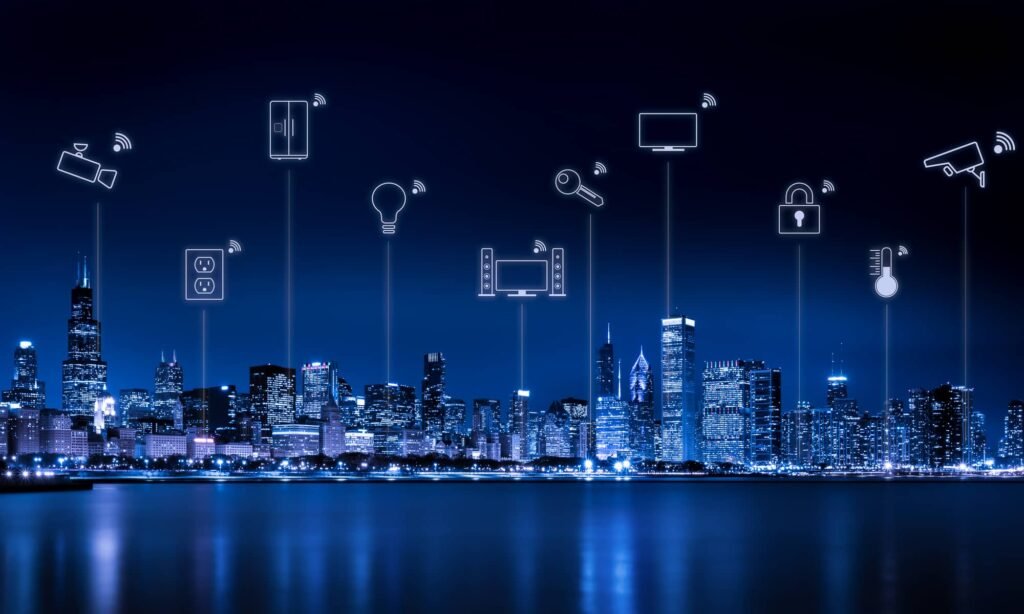About Cell Phones
The journey of cell phones began in the early 1980s, when the first commercially available cell phone, the Motorola DynaTAC 8000X, was introduced in 1983. This groundbreaking device marked a significant leap in communication technology, as it allowed users to make calls without the constraints of landlines. However, its large size and high cost limited widespread adoption during its initial years. As technology evolved, the transition from analog to digital communication systems became a crucial step in the cell phone evolution. The introduction of digital technologies in the 1990s led to enhanced call quality, increased network capacity, and improved battery life. This period also saw the emergence of the first text messaging services, paving the way for new forms of communication that would later dominate mobile interactions.
Cell phones were previously portable devices on cellular networks that focused primarily on voice conversations and minimal messaging. Mobile phones, on the other hand, are a broader category that includes modern smartphones with comprehensive functionality, applications, and internet access.
The turn of the millennium was marked by the advent of smartphones, which revolutionized the way users interacted with their devices. The release of the Apple iPhone in 2007 is often considered a pivotal moment in this evolution, as it combined sophisticated technology with a user-friendly interface. This innovation spurred an entire industry focused on mobile apps, leading to an explosion of platforms and services designed to enhance user experience. The rise of mobile internet further transformed society by enabling always-on connectivity, allowing people to access information at their fingertips. Key players in the mobile phone industry, such as Samsung, Nokia, and later players like Google, contributed significantly to this evolution, pushing boundaries in design, functionality, and accessibility. Each technological advancement has had profound implications for communication practices and societal norms, leading to the interconnected world we experience today.
About Smartphones
A Brief History
The concept of smartphones originated in the early 1990s, marking a pivotal shift in mobile communication technology. The first device that resembles the modern smartphone was the IBM Simon Personal Communicator, released in 1994. This groundbreaking device combined features of a mobile phone with those of a PDA (Personal Digital Assistant), including a touchscreen, email capability, and a calendar, setting a foundation for future developments.
By the early 2000s, the smartphone market began to evolve further with the introduction of Microsoft’s Windows Mobile platform. Devices such as the Palm Treo and the BlackBerry allowed users to utilize E-Mail on-the-go, significantly enhancing productivity. However, it was not until 2007 that the smartphone landscape underwent a major transformation with Apple’s launch of the iPhone. The introduction of a capacitive touchscreen and an intuitive user interface revolutionized how users interacted with their devices. This innovation not only marked the beginning of a new era of smartphones but also established a standard for user experience that competitors would soon emulate.
Read More
The subsequent release of Google’s Android operating system in 2008 further accelerated the smartphone evolution. By opening the platform to multiple manufacturers, Android quickly gained traction and offered diverse options for consumers. This democratization of technology propelled the integration of smartphones into everyday life, creating ecosystems that catered to various user preferences. Advancements in hardware, including improved processors, high-resolution cameras, and extensive app ecosystems, allowed smartphones to perform tasks previously reserved for computers.
As smartphones evolved, features such as GPS navigation, mobile payment systems, and social media apps became standard. Today’s smartphones serve as multifunctional devices, blending communication, entertainment, and productivity tools into a single entity, highlighting their indispensable role in modern society.
The Defining Features
Modern smartphones have evolved significantly, incorporating a diverse array of features that cater to the varied needs of users. One of the most notable advancements is the high-resolution camera technology. Today’s smartphones are equipped with multiple lenses, enabling users to capture images with remarkable clarity and detail, which has revolutionized mobile photography. This allows individuals to document their lives instantly, contributing to the growing culture of social media sharing and digital storytelling.
In addition to camera capabilities, contemporary smartphones house powerful processors that facilitate seamless multitasking. These processors, often paired with significant RAM, empower users to run multiple applications simultaneously without experiencing lag. This performance enhances productivity, enabling tasks such as video conferencing, online collaboration, and gaming, all within a single device. The capacity for multitasking exemplifies how smartphones serve as essential tools in both personal and professional settings.
Furthermore, modern smartphones integrate sophisticated biometric security measures, providing users with a sense of safety regarding their personal data. Technologies such as fingerprint scanners and facial recognition have become standard, ensuring that sensitive information remains protected. Coupled with cloud integration capabilities, users can safely store and access their files from anywhere, optimizing the convenience and functionality of their devices.
Design advancements have also played a vital role in the evolution of smartphones. Sleek and slim profiles, along with premium materials, have made these devices more visually appealing. Additionally, improvements in battery life have addressed one of the major limitations of earlier models, allowing users prolonged usage without frequent recharging. Connectivity options, particularly the rollout of 5G technology, have further enhanced the smartphone experience by enabling faster internet speeds and more reliable connections. Through these developments, modern smartphones have become indispensable tools that enhance usability and personalization for consumers.
The Societal Impact
The advent of smartphones has unequivocally transformed numerous facets of modern society, revolutionizing the way individuals communicate, learn, and interact with the world around them. Smartphones have emerged as multifaceted tools that enable instantaneous communication across vast distances, thereby fostering connectivity among friends, families, and colleagues. The use of messaging apps, social media platforms, and video conferencing has rendered traditional communication methods nearly obsolete, promoting a more immediate and personal connection. As a result, social interactions have evolved, with people increasingly relying on their smartphones to maintain relationships and engage in social networks.
Moreover, smartphones have become essential in facilitating remote work, which has gained significant traction in recent years, particularly in response to global events such as the COVID-19 pandemic. Mobile applications and cloud-based tools allow professionals to collaborate effectively, conduct virtual meetings, and access vital resources from anywhere. This flexibility has not only contributed to enhanced productivity but has also reshaped ideas about work-life balance, giving individuals greater autonomy over their schedules.
In the realm of education, smartphones serve as invaluable resources for learning and information acquisition. Educational apps and online courses accessible through mobile devices have democratized access to knowledge, enabling learners from diverse backgrounds to pursue educational opportunities with ease. However, these benefits come with challenges, such as the risk of screen addiction, which can adversely affect mental health and interpersonal relationships. Notably, concerns surrounding privacy and data security have surfaced, prompting discussions about how personal information is handled and the risks associated with smartphone use.
Additionally, the digital divide remains a pressing issue, as not everyone has equal access to smartphone technology. While smartphones can enhance educational and career opportunities, disparities in device access can exacerbate existing inequalities. In summary, the societal impact of smartphones is multifaceted, presenting both opportunities and challenges that warrant careful consideration.
Trends and Predictions
- Artificial intelligence -> AI is also set to play a pivotal role in the future of smartphones, fundamentally enhancing user experience. From personalized virtual assistants to improved photography through computational photography, AI can empower devices to learn and adapt to individual user preferences. Predictions suggest that future smartphones will feature more seamless integration of AI, streamlining functionality, automating tasks, and optimizing battery life for extended usage.
- Internet of Things -> Lastly, smartphones are expected to play a crucial role in the Internet of Things (IoT), serving as hubs for interconnected devices. This trend suggests that future smartphones will not only serve individual users but will also coordinate smart home appliances, wearables, and other connected technology, ultimately creating a more integrated lifestyle.
- Sustainability -> As sustainability becomes a growing concern, manufacturers are increasingly focusing on green practices. Future smartphones may prioritize eco-friendly materials, energy-efficient components, and ways to minimize electronic waste. The ongoing development of battery technology is anticipated to yield longer-lasting and quicker-charging options, thus addressing consumer demands for efficiency and convenience.
- Augmented Reality -> Another significant development lies in the integration of augmented reality (AR) within smartphones. With the proliferation of AR applications in gaming, retail, and education, smartphones are poised to become essential tools for interactive experiences. The ability to overlay digital content onto the real world can reimagine how users interact with their environment, potentially revolutionizing sectors such as real estate and travel. As processing power increases, the capabilities of smartphones to run sophisticated AR applications will likely advance, further bridging the gap between the digital and physical worlds.
- Foldable Devices -> The evolution of smartphones has been marked by rapid advancements and shifting consumer preferences, indicating a dynamic future for mobile technology. A noteworthy trend is the emergence of foldable devices, which offer the versatility of larger screens without compromising portability. Manufacturers such as Samsung and Huawei are leading the way, producing smartphones that can transform from a compact phone to a tablet-sized display. This innovative design not only enhances user experience but also opens up new possibilities for multi-tasking and immersive media consumption.
What’s More
The posts in My Blog feature reflective, story-driven pieces rooted in personal and societal insights.
The topics in My Interests explore abstract, philosophical ideas and their cultural and societal impact.
👁️ 5,348 Views


















